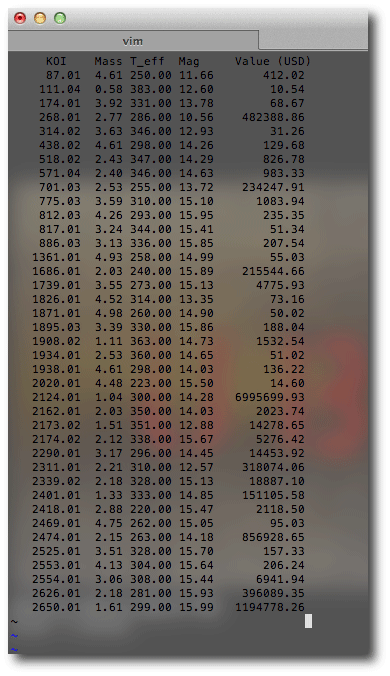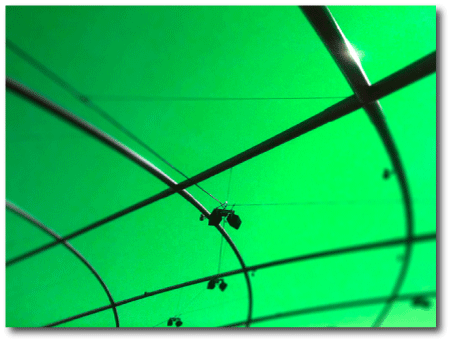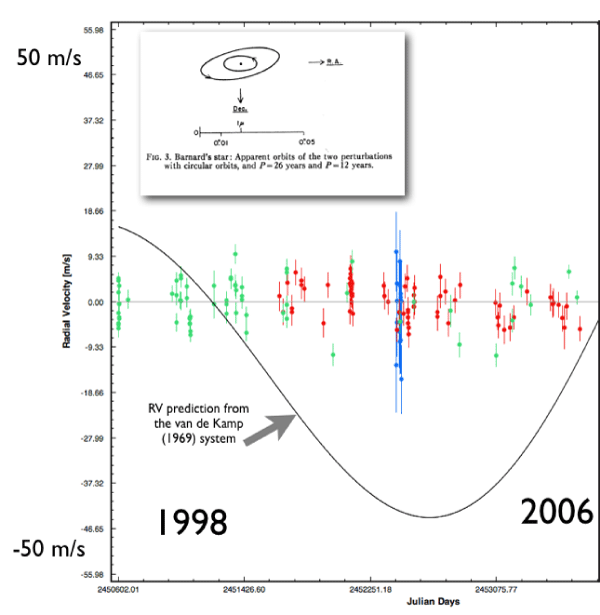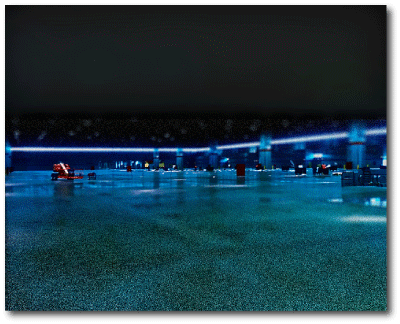
Following the 1846 discovery of Neptune by Urbain J. J. LeVerrier of France and Johann Galle of Germany, the British astronomical establishment — the Rev. James Challis, the Astronomer Royal George Biddell Airy, and Sir John Herschel — found themselves in rather hot water. Diffidence, seeming indifference and miscommunications had deprived Britain of a very tangible emblem of national prestige. In the damage-control scramble that ensued, Herschel wrote urgently to William Lassell, a wealthy brewer in Liverpool who owned a 24-inch telescope, exhorting him to search for satellites “with all possible expedition!”. Lassell was on task. A mere 17 days after the announcement of Neptune’s existence, he had discovered Triton, thus handing his countrymen a victory in the losers’ bracket rounds.
The quick discovery of Triton occurred in large part because astronomers were conditioned as to what to expect. Jupiter, Saturn and Uranus all host regular satellite systems in which the orbital periods of the satellites are measured in periods lasting days to weeks, and in which the mass ratio of the satellites to the primary is of order two parts in 10,000. These rules of thumb hold quite nicely, despite the fact that Jupiter has more than 20 times the mass of Uranus.
Much of the bewilderment that has accompanied the discovery of extrasolar planets stems from the fact that planets found orbiting other stars don’t bear much resemblance to configuration of our own planetary system. First, hot Jupiters. Then giant planets on highly eccentric orbits with periods of a few hundred days. And now, the realization that over half of the sun-like stars in the solar neighborhood are accompanied by planets with masses in the superEarth/subNeptune range and orbital periods of less than 100 days. It’s now clear, in fact, that our own solar system is unusual at least at some modest level, and perhaps at quite a significant level.
As hordes of new planets pile into the candidate tables at exoplanet.eu, the correlation diagrams are really beginning to show the true features of the galactic planetary census. The classic log-log mass-period diagram is a good example. Here’s one that’s (already) two months out of date:
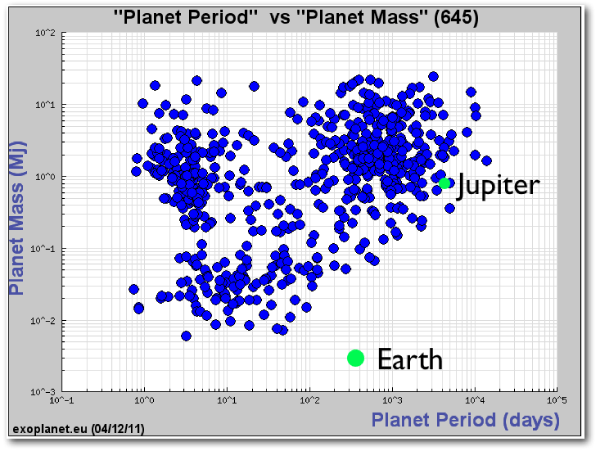
The lower-right portion of the above diagram is incomplete, and there are a whole slew of observational biases at work, but nevertheless, the relatively depopulated divisions between the superEarth/subNeptunes, the hot Jupiters and the eccentric giants are real features of the planet distribution. There’s truth in the fact that one can sometimes overlook the forest for the trees. By smearing vaseline on the laptop screen and taking a cell-phone photograph, one obtains a better sense of the outlines of the forest:

It’s interesting to adjust the log-log mass-period diagram so that the y-axis charts the planet-to-star mass ratio rather than planetary mass (an advantage of logarithms is that concerns regarding the difference between M and Msini are effectively academic). With this plotting scheme, Earth and Jupiter are still off the guest list, but remarkably, the regular satellites of the Jovian satellites adhere to the same distribution as the superEarths and subNeptunes:
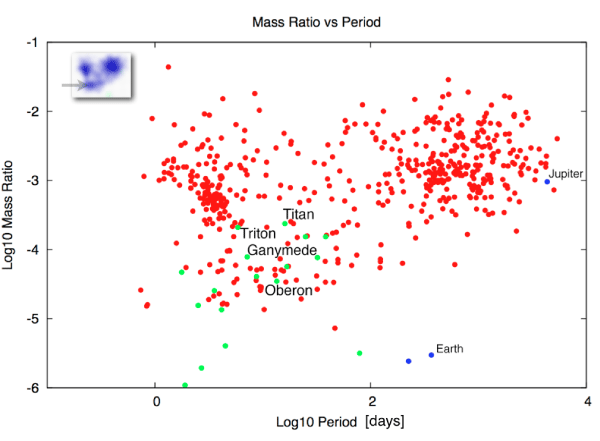
A comparison that’s made all the more dramatic with the inclusion of the Kepler multiple-transit candidates:
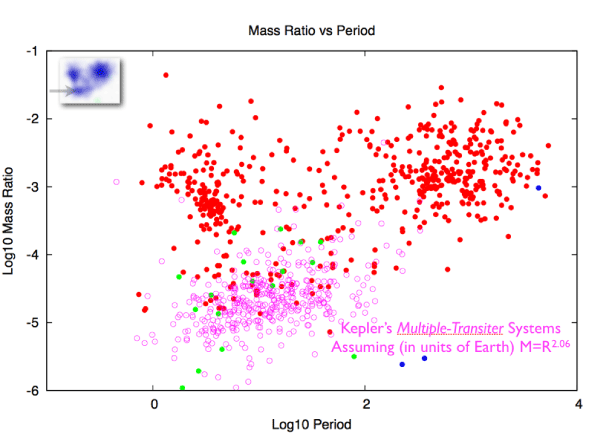
A coincidence? I don’t think so.
